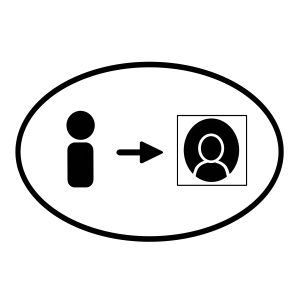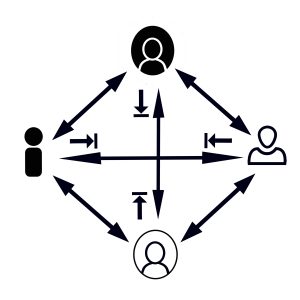 Gereon Kopf received his Ph.D. from Temple University (1996). He is affiliated with Luther College. He has taught at Hong Kong University (2008-2009), Saitama University (2013, 2015, 2016), the Julius Maximilian University of Würzburg (2018), and the University of Iceland (2017-2022), and served a grant of the Wabash Center as P.I. (2020-2022). He is currently working on Zen: Myth, History, and Diversity (2024), Philosophy of Mind Around the World (2024), and a multi-entry approach to philosophy of religion (2024). We invited him to discuss comparative philosophy of religion as part of our “Philosophers of Religion on Philosophy of Religion” series.
Gereon Kopf received his Ph.D. from Temple University (1996). He is affiliated with Luther College. He has taught at Hong Kong University (2008-2009), Saitama University (2013, 2015, 2016), the Julius Maximilian University of Würzburg (2018), and the University of Iceland (2017-2022), and served a grant of the Wabash Center as P.I. (2020-2022). He is currently working on Zen: Myth, History, and Diversity (2024), Philosophy of Mind Around the World (2024), and a multi-entry approach to philosophy of religion (2024). We invited him to discuss comparative philosophy of religion as part of our “Philosophers of Religion on Philosophy of Religion” series.
On December 3, 2021, my first contribution to this series of stimulating online conversations on philosophy of religion (hereafter “PoR”) appeared. In that contribution, I introduced my fourth-person approach as a possible model/vision of/for a future philosophy (of religion). So, when Wesley Wildman and David Rohr invited me to contribute to the current discussions on the de/merits of comparative philosophy I gratefully agreed to enter in this conversation and to introduce my multi-entry approach as an example-of/alternative-to comparative PoR. My essay today begins with a bold claim: More often than not, comparative PoR perpetuates hegemonic discourses. The multi-entry approach is designed to subvert those power structures. In this essay, I would like to reflect on how my practice of comparative religious studies and comparative PoR has led me to develop this innovative method.
Since 2014, a group of us (many of whom have contributed to the discussions on PoR here) have been involved in a project called “Global-Critical Philosophy of Religion” (hereafter abbreviated as “GCPoR”). We started our collaboration with a seminar at the American Academy of Religion (“AAR”) (2015-2019) and, this year, launched a permanent program unit at the AAR with the same title. Since 2015, we have also been holding workshops and coordinating book projects with the generous support of, among others, the NEH, the Wabash Center, and the University of Birmingham/Templeton Foundation. In the stimulating context of this group, I have developed a new approach to doing PoR globally and critically that I call the “multi-entry approach.”
So why did I think it beneficial to develop a new approach-to/method-of PoR? I was trained in comparative religious studies, comparative PoR, and in the field of inter-religious dialogue at Temple University. As a graduate student with prior training in Catholic Theology, I was attracted to the attempt to expand and globalize our discourses on/in religion, philosophy, and PoR to include a multiplicity of traditions. This is what I think is comparative PoR is at its best: developing a method to include representative texts, authors, and scholars of a multiplicity of traditions and disciplines into what is constitutive of PoR. However, even the best-intended projects to expand the scope of PoR globally, unfortunately, have had their pitfalls as the works of Edward Said (1978) and Gayatri Chakravorty Spivak (1982) have aptly demonstrated. Even Anthony Appiah’s vision of cosmopolitanism is not immune to criticism.
While projects in comparative PoR usually start with the noble intent to be inclusive, they disclose three problematic features:
1) The very attempt to reach across boundaries, implies that there are boundaries in the first place. Many comparative projects imply, to varying degrees, a cultural essentialism that constructs cultures and traditions as “quasi-entities” (Clarke 1993, 14), erects “glass curtains” (ibid., 17), and perpetuates “enclavism” (ibid., 14). This reification of cultural monoliths is especially visible in the rhetoric of “East” vs. “West” and projects such as the “Christian-Buddhist dialogue.” It is also implied in disciplinary language that identifies a comparison between Derrida and Nāgārjuna as “comparative philosophy” but not one between Foucault and Habermas. It goes without saying that there is no dialogue between or comparison of Christianity and Buddhism, but only between/of individual people, texts, rituals, or beliefs identified as “Christian” and “Buddhist,” respectively. Reducing the diversity within and the complexity of traditions to alleged representatives raises the question of “representation” in its twofold sense of darstellen/vertreten and that of the subaltern as Spivak (1982, 70) called to our attention in her pioneering “Can the Subaltern Speak?”
2) In general, comparativists seem to apply one of two possible methods, a first-person approach that uses the language/method of one of the conversation partners and applies it to the other/s––as the many essays reading the philosophies of Nāgārjuna or Dōgen as deconstruction do––or a third-person approach that applies an external and allegedly neutral method to both conversation partners. The latter is the method used prevalently in comparative religious studies but also in recent projects in comparative or global PoR (Kopf 2023a, 123-124). The very usage of the categories “religion” and “philosophy” in many comparative projects is symptomatic of a first-person approach. If we explore phenomena that we in English call “religion” or even modify our categories in the light of discourses on this subject in cultural and linguistic realms outside of the traditions that coined this terminology, I suggest using the categories “religion” (i.e., what we call “religion”) and religion (i.e., “religion” that is not religion) instead. The latter parenthetical phrase is inspired by the rhetoric of the Diamond Sūtra (Vajracchedikā-prajñāpāramitā-sūtra). 3) Comparisons and dialogues, as important as they are, tend to obscure the complexities of texts, rituals, beliefs, and identities as they mostly result in a judgement postulating either their identity or highlighting their difference.
To reflect on comparative PoR and intercultural encounters critically, I developed a fourfold typology (Kopf 2017, 2022): 1) the “sufficiency-of-the-self” (graph 1), 2) “the encounter-with-the-other” (graph 2), 3) the “face-of-the-third” (graph 3), and 4) the “presence-of-the-fourth” (graph 4). Type 1) focuses on the self and sees the world exclusively through one’s own lens; type 2) focuses on the perceived differences between self and other and divides the world into binaries and dichotomies; type 3) focuses on the shifting alliances between self and other vis-à-vis a third, self and third vis-à-vis the other, and other and third vis-à-vis the self; and type 4), on the particular positionality of all parties involved in this comparison or “multilogue” (Kopf 2021, 2022) as well as what is included/excluded by each of them.
I would like to illustrate these four types with four possible responses to cultural diversity, to disciplinary diversity, and to my essay.
Four possible response to cultural diversity are “1) ethnocentrism; 2) the … variations on the so-called ‘clash of civilizations,’ be it the domination of one culture over the other(s), an eternal conflict, or an awkward truce; 3) Anthony Appiah’s vision that cosmopolitans negotiate cultural specificities with our common humanity; and 4) hybridism.”
Four possible response to disciplinary diversity are “1) disciplinary sectarianism and dogmatism; 2) disciplinary competition and rivalry; 3) cross-disciplinary collaborations; and, 4) multi-disciplinarity wherein scholars start to see their own disciplines in the larger network of disciplines” (Kopf 2022, 67).
Four possible responses to my essay are the attempts 1) to interpret my essay on the reader’s own terms, 2) to focus on differences between the position of my essay and the reader’s own, 3) to identify similarities between us (against other/third approaches), and 4) to engage in critical analysis and to locate my position as well as the position of the reader on the landscape of ideologies and disciplines.
This typology has led me to what I call “multi-entry philosophy.” It is inspired by the non-essentialist philosophies implied in Chengguan’s (738-839) “fourfold dharma world” (sifajie 四法界), Dōgen’s (1200-1253) notion of “expression” (dōtoku 道得), and Nishida Kitarō’s (1870-1945) conception of the “historical world” (rekishitekisekai 歴史的世界). Using such a non-essentialist framework, we can say that every position expresses and every discipline inquires into religion “fully but not completely” (Kopf 2023a, 127). To cite Dōgen, “when one side is illuminated, another [side] is obscured” (DZZ 1:7). All worldviews and methods have strengths and weaknesses. Each religious philosophy as well as each discipline exploring them highlights one aspect of religion and obscures another. Thus, to engage in comparative PoR, I suggest a multilogue that is based on the “presence-of-the-fourth.”
I have outlined the framework of such a multilogue in a recent essay:
The foundations of such a multilogue are a) “acknowledge your social position” (地位意識), b) “erase all power difference––level the playing field” (消除力差 – 公平場所), c) “protect all participants” (守護大家), d) “remember the past––envision the future” (記憶過去 – 展望未來), and e) “search the common good” (求共同善). …. Its strategies [of engagement] are a) “listening to the other” (聆聽他者), b) a thorough and systematic “examinations of assumptions, arguments, and beliefs” (考察論點) … c) “standpoint analysis” (分析立場), by means of which we assess what standpoint and cognitive frames specific beliefs express; d) … [applying] the “dialectics of similarities and differences” (辯證異同) … e) “locating the conversation partners on the ideological landscape” (重視語境) (Kopf 2023a, 140-141).
In every encounter situation and multilogue, including discursive ones, there exist ample power differentials, some obvious some subtle, centers and margins, and varying degrees of privileged positions. Two of these centers/privileged positions are always implied and rarely acknowledged: the anglophonocentrism rampant in comparative discourses and the hegemony of academically sanctioned methods and languages. Trinh Minh Ha explores, among others, these two privileged positions in her trailblazing Woman, Native, Other (1989). A multilogue can only be successful if all participants are aware of their own historical, social, and discursive positions and the multiplicity of perspectives on our position/alitie/s. We need to realize that our metaphysical and moral frameworks are not necessarily shared and open ourselves to listen to a variety of worldviews as well as the place our own positions inhabit in them. Then, through the practice of “deep listening” (Thich Nhat Hanh) and what I call “standpoint analysis,” we might be able to identify what aspect of religion each of our worldviews and methods of inquiry illuminates and which ones they obscure.
The application of this method is not easy. First, it requires that we have to step outside of our comfort zone and agree on a common method with our conversation partners. This means we may have to let go of some our discursive assumptions and privileges. It may require that we learn and use new conceptual frameworks and languages. Ideally, though impractical, essays on GCPoR are multilingual and employ a multiplicity of genres. Most of all, however, this approach requires that we hear how our own position/method as well as its socio-historical and discursive location is viewed by multiple others. The ensuing potential disenchantment and disillusionment can be challenging and even painful. But I believe it is worth the discomfort since those kinds of rapprochement may help us realize the vision that motivated the pioneers of comparative PoR in the first place: to be truly inclusive, to work towards mutual understanding, and to avoid exclusive judgements. Judging from the news these days, such a mutual rapprochement and understanding might be more urgent than ever.
Works Cited:
Abbreviations
DZZ 『道元禅師全集』 [Complete Works of Zen Master Dōgen]. 2 vols. Ed. Dōshū Ōkubo 城大久保道舟. (Tokyo: Chikuma Shobō, 1969-1970).
Other Works
Clarke, J. J.1993. Jung and the East: A Dialogue with the Orient. New York: Routledge.
Kopf, Gereon. 2021. “How to make Philosophy of Religion Relevant for the Future.” In Philosophy of Religion: big question philosophy for scholars and students, ed. David Rohr. December 3, 2021 (https://philosophyofreligion.org/?p=525634#more-525634).
_____. 2022. “Envisioning Multi-Cultural and Multi-Disciplinary Engagement: Lessons from the Twelve Wolf Encounter Pictures.” Culture and Dialogue Vol. 10, No. 1.
_____. 2023a. “The Theory and Practice of the Multi-Entry Approach.” In Diversifying Philosophy of Religion: Critiques, Methods, and Case Studies, eds.: Nathan Loewen and Agnieszka Rostalska, Chapter 8. New York: Bloomsbury Academic.
_____. 2023b. “Expression.” In Key Concepts in World Philosophies: Everything you need to know about doing Cross-Cultural Philosophy, eds.: Sarah Flavel and Chiara Robbiano, 365-375. Bloomsbury Academics, 2023.
Said, Edward. 1978. Orientalism. New York: Vintage Books.
Spivak, Gayatri Chakravorty. 1982. “Can the Subaltern Speak.” In Marxism and the Interpretation of Culture, editors: Cary Nelson and Lawrence Grossberg, 66-111. Basingstoke: Macmillan Education.
Trinh, Minh Ha. 1989. Woman, Native, Other. Bloomington: Indiana University Press.




